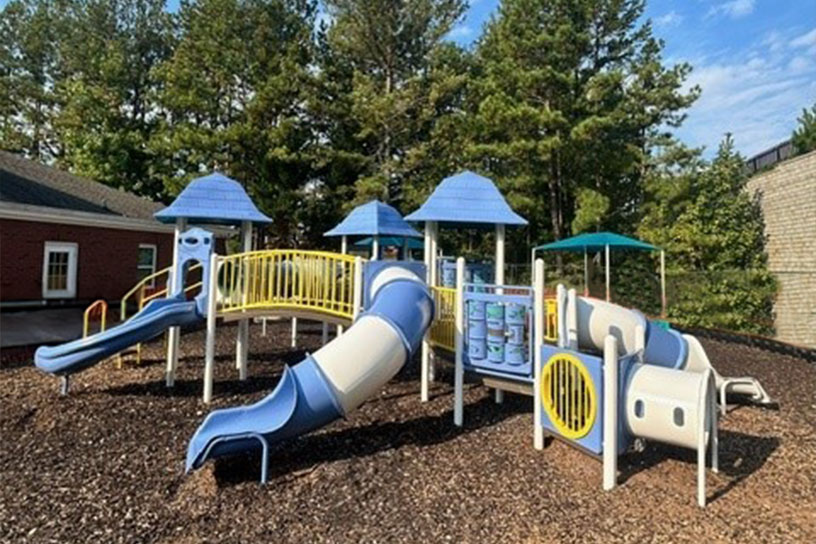Spotting Wear and Tear: Signs Your Playground Needs an Inspection
As a certified park inspector, ensuring the safety of all park visitors, particularly children using playground equipment, is of utmost importance. Playground equipment serves as a vital component of any community park, providing a secure space for children to play, exercise, and develop essential social skills. However, even the finest playground equipment can experience wear and tear over time, leading to potential hazards and injuries.
In this blog post, we will explore the top ten signs that your playground may need inspection or replacement, covering crucial aspects including
- Age of the equipment
- Visible damage
- Wear and tear
- Loose or broken parts
- Trip and fall hazards
- Faded or missing safety signs
- Excessive wobble
- Inadequate drainage
- Lack of accessibility
- Outdated design.
Age of the Equipment
One prevalent reason for playground replacement is the age of the equipment. Like any man-made structure, playground equipment can deteriorate over time due to factors such as weather, wear and tear, and vandalism. Older equipment may not meet current safety standards, lacking the latest safety features and posing increased risks to children.
What is the Average Lifespan of Playgrounds & Equipment?
The average lifespan varies based on factors like materials, quality, use, and maintenance. Industry estimates suggest an average lifespan of 10 to 15 years, assuming proper installation, use, and maintenance.
Visible Damage
Any visible damage to playground equipment, such as cracks, rust, sharp edges, or missing components, indicates potential safety risks. A thorough inspection during routine checks helps identify visible issues that need prompt attention.
How is Visible Damage Assessed During a Playground Inspection?
Inspectors visually examine all components, checking for cracks, rust, sharp edges, splinters, loose bolts, and faded or worn surfaces. Prompt action is recommended for any visible damage.
Wear and Tear
Excessive wear and tear, including peeling paint, worn parts, or fading colors, can impact the functionality of the equipment and pose safety risks. Regular inspections help identify signs of wear caused by weathering, general use, vandalism, aging, chemical exposure, and improper maintenance.
Loose or Broken Parts
Any loose or broken parts, such as chains, ropes, swings, or slides, can lead to accidents and injuries. Regular checks, especially for frequently used components, are essential to ensure their integrity.
How Often Should You Inspect Swings, Ropes, Chains, and Slides on a Public Playground?
Frequent inspections, including daily checks for visible damage and routine annual inspections by certified inspectors, are recommended. Following manufacturer recommendations and maintaining records of inspections contribute to equipment safety.
Trip and Fall Hazards
Identifying potential trip and fall hazards throughout the playground is crucial for maintaining a safe play environment. Regular inspections should include checking for uneven surfaces, tripping hazards, proper stair and handrail conditions, gaps, sharp edges, and ensuring adequate safety surfacing.
Faded or Missing Safety Signs
Safety signs play a crucial role in informing visitors of proper equipment use and potential risks. Faded or missing safety signs can compromise safety. Playground safety stickers should be replaced at least annually during routine maintenance.
What is a Playground Safety Sticker?
Playground safety stickers are labels providing safety information and guidelines for equipment use. They are affixed to playground equipment, emphasizing the importance of adhering to safety rules.
Excessive Wobble
Playground equipment showing excessive wobbling or instability may indicate structural damage or wear. Regular inspections involving checks on footing, connections, frames, supports, and testing for wobbling help maintain stability.
Inadequate Drainage
Inadequate drainage can lead to standing water, creating slippery surfaces on playgrounds. Proper drainage systems, non-slip surface materials, regular cleaning, and additional features like canopies help eliminate standing water and enhance safety.
What Kind of Drains Can Be Installed on Playgrounds?
Various drains, including trench drains, French drains, catch basins, swales, and surface drains, can be installed to channel water away from the play area.
Lack of Accessibility
Ensuring playground accessibility is crucial. Providing equal opportunities for physical activity, and complying with ADA regulations and meeting minimum standards is absolutely necessary. Failure to meet accessibility standards can result in fines and legal consequences.
Can You Be Fined if Your Playground Isn’t Accessible or ADA-compliant?
Yes, non-compliance with ADA regulations can lead to fines, legal issues, and negative publicity. An ADA accessible playground ensures accessibility to the playground itself as well as to the play components on the playground.
Outdated Design
Outdated playground designs may not meet current safety standards. Features like tall and narrow structures, hard surfaces, limited play options, and lack of shade may pose safety risks. Regular inspections help identify outdated designs that require updating or replacement.
Regular inspections, prompt repairs, and adherence to safety standards are essential for maintaining safe and enjoyable community playgrounds. Playground Guardian offers comprehensive services, including safety inspections, maintenance, education, and tailored playground software to ensure compliance and enhance playground safety. Contact us today for more information or to schedule a consultation.





